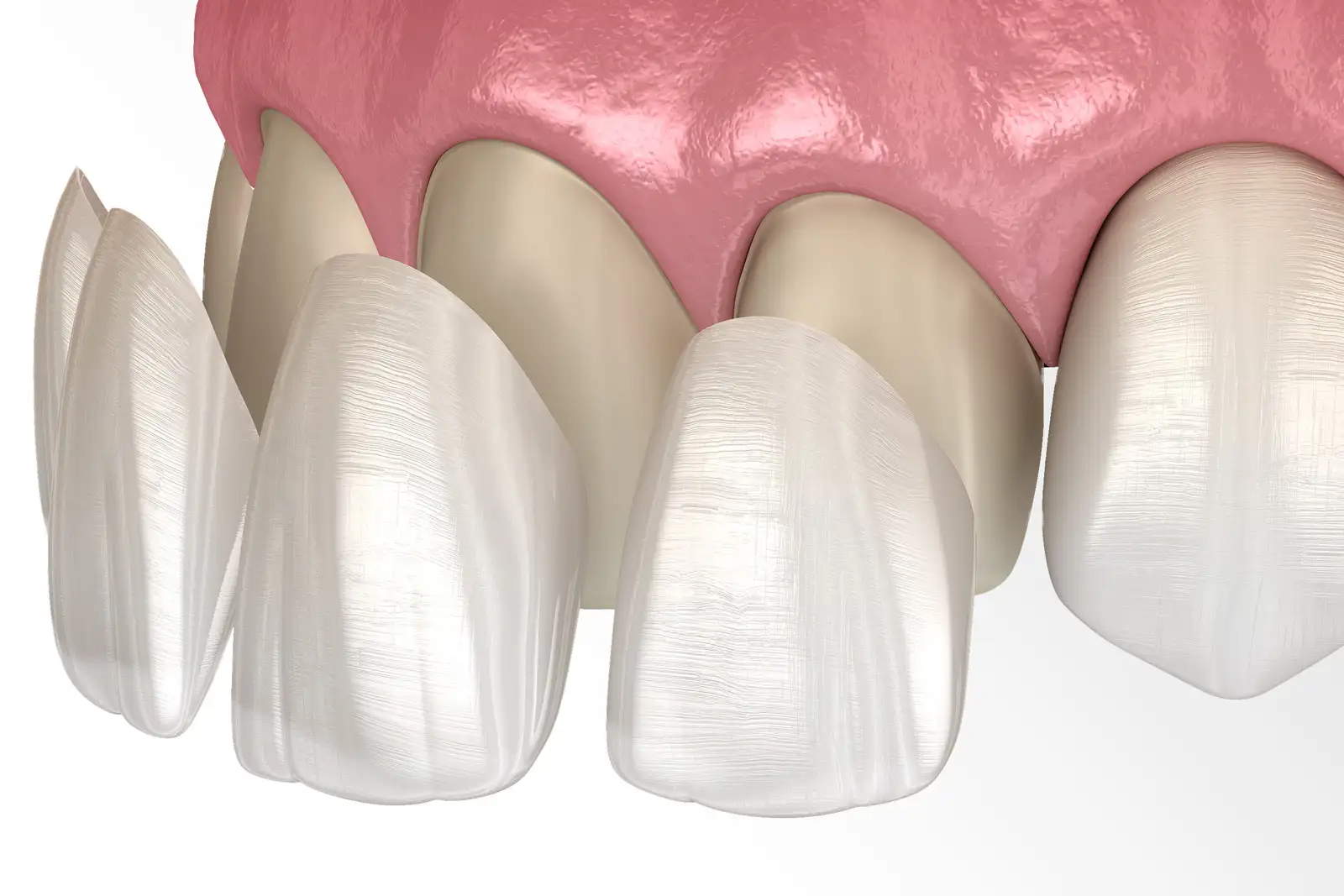Dental veneers
Designed for individuals seeking to enhance the aesthetic appearance of their teeth in a short period, dental veneers effectively correct tooth color, shape, and minor imperfections

These thin, aesthetic coverings are applied to the front surface of the teeth, providing top-tier dental aesthetics through a minimally invasive method.
What are dental veneers?
Dental veneers are thin ceramic or composite shells affixed to the front surface of teeth, preserving the healthy tooth structure with minimal enamel reduction.
They are a popular solution in cosmetic dentistry, offering long-lasting results with minimal alteration to the natural tooth. Made from high-quality dental materials like porcelain, which resists discoloration, or composite resin, veneers provide a durable and aesthetic enhancement.
Advantages of dental veneers
- Minimally invasive procedure – typically requires minimal tooth preparation
- Long-lasting aesthetics – porcelain veneers resist stains and discoloration
- Natural appearance – thin and translucent, mimicking natural tooth enamel
- Improved functionality – correct minor aesthetic imperfections without orthodontic treatment
- Durability – can last 10–15 years with proper oral hygiene
Who are suitable candidates for dental veneers?
Dental veneers are ideal for individuals with:
- Discolored teeth
- Chipped, worn, or irregularly shaped teeth
- Mild gaps between teeth (diastemas)
- Slightly misaligned or improperly positioned teeth
- Teeth with irregular surfaces or enamel defects
Veneers are not recommended for individuals with significant bite issues, teeth worn due to bruxism (teeth grinding), or teeth with large fillings.
Procedure for placing dental veneers
The placement of dental veneers typically involves several visits to ensure optimal aesthetic and functional results:
1. First visit – Examination and treatment planning
- Dental examination and assessment of oral health
- Radiographic diagnostics if necessary
- Discussion of desired aesthetic changes and selection of veneer material
2. Second visit – Tooth preparation
- Minimal reduction of the tooth's front surface
- Taking impressions for precise veneer fabrication
- Placement of temporary veneers if needed
3. Third visit – Fabrication and placement of veneers
- Veneers are fabricated in a dental laboratory within a few days
- Dentist places the veneers and adjusts them to match the shape and color of the patient's natural teeth
- Once both patient and dentist are satisfied with the appearance, the veneers are permanently bonded to the teeth
Dental veneers offer an aesthetic and durable dental solution for patients seeking to improve their smile without invasive procedures.
They provide a natural appearance, require minimal tooth preparation, and have high resistance to discoloration.
Maintaining proper and regular oral hygiene, along with routine dental check-ups, is crucial for the longevity of dental veneers.
Frequently asked questions about dental veneers
Veneers are a long-term solution and can last 10–15 years or longer with proper care.
Yes, porcelain veneers are designed to mimic the natural appearance of teeth, including color and translucency.
No, the procedure is minimally invasive and can be performed under local anesthesia if necessary.
Placing veneers typically requires 2–3 dental visits over a period of 1–2 weeks.
Porcelain veneers do not change color and are stain-resistant, while composite veneers may darken over time.
Yes, but it's advisable to avoid particularly hard foods like nuts or ice to prevent cracking.
If a veneer is damaged, it can be replaced with a new one. If it falls off and is undamaged, the dentist can reattach it.
Yes, veneers can close minor gaps between teeth and improve their shape.
Veneers should be cared for like natural teeth – regular brushing, flossing, and routine dental check-ups.
Dental veneers cover only the front surface of the tooth, while crowns cover the entire tooth and are used for more severe damage.
Contact us
Our friendly team will be happy to listen to your requests.
